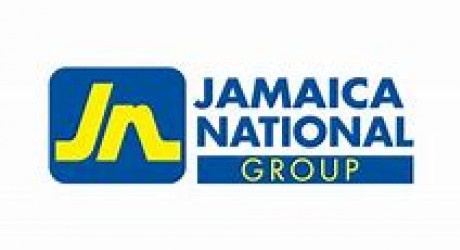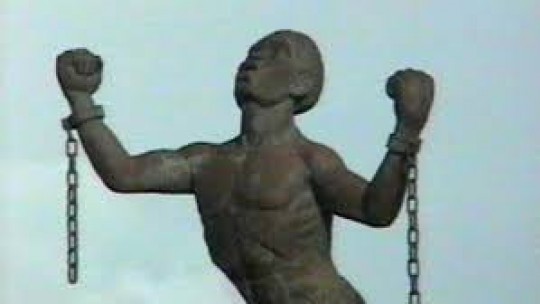Horror and History
10:22 am, Sat March 7, 2020
By Bumpy Walker
The internet is a fascinating tool. For those studying, it can offer endless distractions. Last week while studying for a qualification in Energy Storage, a web site www.slavevoyges.org was the cause of my prevarication.
This site contains databases which are a culmination of effort by multi-institutional, multinational actors across four continents to put together information on the Middle Passage. The holistic approach gives a solid foundation to view this four-century long inhumane unforgivable practice. The irony is that this trade contributed benefits to the nations and thus the institutions that funded the creation of this website.
Like all things electronic it is only as good as the information input. My own view is, given the wealth generated by this inhumanity, the data is most likely to be under-reported. The lack of ethics of any captain prepared to sell other humans would no doubt allow him to seek to defraud the investors in their venture.
Summary information
For someone whose formal history training ended more than four decades ago, this website proved to be a fascinating window into a horrifying story of DNA redistribution by force. The sheer horror is impossible to visualise. Fortunately I viewed it all through the prisms of such intellectual works as “Capitalism and Slavery” and “The Black Jacobins” which explore the cause, effect and outcomes. Given that numbers are simply too large to comprehend, within this stark statistical miasma are personalised connections, some of which I will discuss.
A total of 10.7 million victims were transported out of Africa. That is more than three times the population of Jamaica and ten times the current population of Gabon. The journey took an average of 60.5 days, two to three menstrual cycles from a female perspective. An average of 310 Africans were forcibly embarked on each vessel and on average 270 survived. Not surprisingly 65 % of the victims were male but 22 % were children. The data base records a total of 36, 108 middle passage voyages.
Fascinatingly, the Intra America trade shows a mere half a million were transported, of which 74 % were male and 28 % were children. The survival rate was much higher on these shorter voyages; the vessels were smaller, some carrying as few as a single person. In today’s parlance, imported humans were stockpiled at logistics centres such as Havana prior to redistribution throughout the region. No doubt value was added, when locally born people were exchanged for treasure to forcibly create wealth.
The last time Africans were forcibly landed in Jamaica was on the 22nd of December 1857, some nineteen years after the ancestors stopped providing forced labour. The ship was the “ Zelinda” a schooner which had begun its journey out of New York. It had collected its victims in Cabinda, Angola (I had some adventures there a long time ago) and had been intercepted by the Royal Navy’s anti-slavery patrols. Paul Bogle, the second greatest Jamaican, would have been a “hard man” of 26 at the time.
The last vessel registered in the database is nameless. It arrived with a complement of 700 Africans in Havana in 1866, after feeding 151 souls from an unknown port in Africa to the fishes of the central Atlantic. This was probably happened less than a year after the hanging of Paul Bogle and his freedom fighters.
The Brooke, The Zong, The Amistad, and Jesus of Lubeck
The above are the name of the vessels I wa aware of before seeing this data base. Awareness of “The Brooke” came because the graphic artist Neville Garrick incorporated the images of its accommodation plan into Bob Marley’s Survival album art. The database shows thirteen voyages by a vessel(s) with that name “Brooke” over a 70 year period. The longevity of this vessel suggests that there were multiple ships which had the same name. Estimated humans “sardined” in hell on board would be approximately 4030.
A video within the website, based on the specialised ship, The L’Aurore, was a horror multiplier when combined with the plan of the “Brooke” as it detailed technology and the methodology engineered to supress our African antecedents on these voyages into hell. (https://www.slavevoyages.org/voyage/ship#slave-)
The educator, Peter Tosh, sprang to mind when perusing this website; after all he sang of the pirate Hawkins. Multiple “Pirate Hawkins” captained 7 voyages between 1565 and 1776. Their butcher’s bill based on the averages was 2170 men, women and children kidnapped with 280 dead cast over board to forever sleep with the fishes.
The vessel Jesus of Lubeck, captained by John Hawkins, made two trips (once I wrote a bad poem about it). A total 459 people were wrenched from their families and deposited in various parts of the Caribbean by him. On its second journey 100 people, (more than the graduating cohort of my Munro class of 1980) were reported to be have been stuffed on board. Eight did not survive. At this stage -early in the 16th century - it is doubtful whether sharks had picked up the habit off following these ships. As they died, the space available to our remaining ancestors would have increased. Did the survivors’ appreciate the extra space, the easing of pressure? Did they even notice? Did the experience make them more callous or more aware of their common humanity?
An observation is that on the earlier journey of “The Jesus” a reported 359 Africans were embarked. One wonders why Hawkins did not fill the space on his two-ship flotilla during the second journey. Did he deliberately under-report with the intention of defrauding his investors (Heyward, Rowland, Hawkins, William, Winter, William, Godard, Anthony) as previously postulated ?
Another interesting aspect of this cruel journey in the “Jesus” captained by Hawkins; the Africans were disembarked at the island of Monte Christi in the Dominican Republic. This is the island said to have inspired Alexander Dumas, to create the island prison in the “Count of Monte Cristo”. It is worth noting that Dumas’s French grandfather smuggled sugar out of the blockaded Haiti via this island and even sold his own son, the General Thomas-Alexandre Dumas Davy de la Pailleterie, into slavery.
As a denizen of St Elizabeth, I’m sure that my ancestors were on The Zong. After all, its Africans were disembarked at Black River. The Zong, it turns out, made a single trip, forcibly transporting humans from Ghana. After its captain and crew gained notoriety by the deliberate drowning 62 humans to claim the insurance, as was common practice, (but murdering 232 humans who died from thirst was ignored), its owners changed the name to the Richard of Jamaica. No more information on this vessel appears in the database, thus supporting my thesis that the horror was under reported; after all it was specially built for the middle passage; it was still seaworthy, so would have been used again. The owners (Gregson, William, Gregson, John, Gregson, James Wilson, Edward, Aspinall, James) did however commission a further 43 trips across the Atlantic. This resulted, based on the averages, in the murder of 1760 Africans. This is slightly more than are killed annually in Jamaica.
The most famous of these nightmare voyages was made by The Amistad in 1839, sailing out of Havana. It had a complement of 24 humans of whom 23 survived. The outcome of this journey is well known. A film based on the events was made. It showed that Africans, through their own agency, took over the vessel. However, it took a lawyers to de-humanise them into property in a court of law to validate their rights. There were a further seven voyages by vessels called The Amistad in the database. Interestingly, there is some evidence that the main protagonist (Cinque) may have gone back to Africa and got involved in the kidnap and sale of other Africans.
In the Name of Jesus and St Thomas
There were 478 voyages on vessels which included “Jesus” in their name. Based on the average complement of 310 people per voyage, approximately 148,180 people were forcibly exposed to his “teachings”. That is roughly the current population of St Elizabeth. Should one classify this as a successful crusade for souls?
The database showed that vessels on these voyages were effective killers of Africans. This led me to check for vessels with the name Thomas or the Spanish equivalent of Santiago. Why? St Thomas, the patron saint of Spain, glories in the title Matamoros (Moor Killer or more correctly Killer of Africans). In total, 244 transatlantic voyages were made by vessels blessed with the name “Thomas”. To quote Bob Dylan, “You don’t count the dead when god’s on your side”.
Outcomes: Pirates & Resistance
The data bases give details of the outcomes of the journeys. These included piracy, resistance, or delivery. Six vessels, including The Amistad, had outcomes of failure due to African resistance. All were on the Intra America trade vessels. This suggests, given the diversity of languages and origins of our ancestors out of Africa, that they did not have the agency to resort to violence to self-liberate. Once lingua franca developed, language is a unifier allowing a unified front. One should take pride in patois, it assisted in our survival.
Interestingly 116 vessels are listed as being captured by pirates! In all the romanticised visions in films which portray piracy, this aspect of thievery is ignored. Instead they are portrayed as romantic, misunderstood, anti-establishment heroes mostly living by a code of honour and living for their collective. Not as what they would have been, willing human traffickers!
Amazing Grace at Cap Lopez
Last year I enjoyed eating freshly caught fish at a restaurant on a splendidly white seemingly endless sandy beach close to one of these ports of embarkation, Cap Lopez, Gabon. Before going, I took a moment to research the location, discovering that it had indeed been an embarkation point to convert Africans into Americans. Now I know Cap Lopez was the point of departure of a minimum of 44 sailings, thus approximately 13640 humans experienced that greatest of horrors.
There’s a reluctance, I believe, to acknowledge much of this history, as it is not all made of revolutionaries or romantic rebels. I know there would have been cow cod wielding overseers like Dessalines or runaway hunters among my ancestors, as well as musket firing obeah men.
I was forced to learn history reluctantly at Munro, a school started from the treasure created by the Africans who were translocated by force and made to labour on the estates of Messers Munro et al., This aspect of the Munronian legacy is not discussed; at times I bring it up with other old boys but it is usually denied with fuzzy math.
For those who regularly sing Amazing Grace be aware that this data base shows its composer John Newton was the captain of vessels on three middle passage voyages. He and the investors (Manesty, Joseph, Lessley, Andrew, Hutchinson, Robert, Chalmers, James) were directly responsible for the death of 123 Africans, and the kidnapping enslavement of a further 400.
To the ancestors go all honours!

9:09 pm, Thu April 11, 2024

10:10 am, Wed April 10, 2024

8:50 pm, Fri April 12, 2024








 All feeds
All feeds







